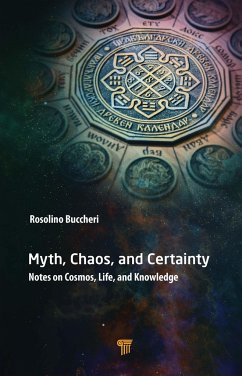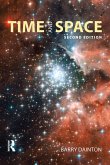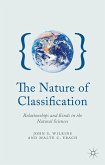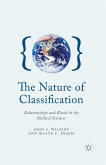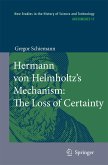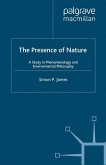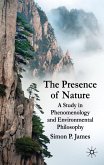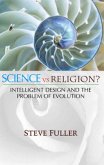- Gebundenes Buch
- Merkliste
- Auf die Merkliste
- Bewerten Bewerten
- Teilen
- Produkt teilen
- Produkterinnerung
- Produkterinnerung
This book offers a study of the three evolutions in a circle (cosmos, life and knowledge) with the aim of discussing the human social behavior, a metaphor of the general behavior of nature (from which man derives) within the fluctuating equilibrium between the opposite tendencies to cohesion and shredding.
Andere Kunden interessierten sich auch für
![Time and Space Time and Space]() Barry DaintonTime and Space38,99 €
Barry DaintonTime and Space38,99 €![The Nature of Classification The Nature of Classification]() J. WilkinsThe Nature of Classification38,99 €
J. WilkinsThe Nature of Classification38,99 €![The Nature of Classification The Nature of Classification]() J. WilkinsThe Nature of Classification38,99 €
J. WilkinsThe Nature of Classification38,99 €![Hermann Von Helmholtz's Mechanism: The Loss of Certainty Hermann Von Helmholtz's Mechanism: The Loss of Certainty]() Gregor SchiemannHermann Von Helmholtz's Mechanism: The Loss of Certainty75,99 €
Gregor SchiemannHermann Von Helmholtz's Mechanism: The Loss of Certainty75,99 €![The Presence of Nature The Presence of Nature]() S. JamesThe Presence of Nature38,99 €
S. JamesThe Presence of Nature38,99 €![The Presence of Nature The Presence of Nature]() S. JamesThe Presence of Nature38,99 €
S. JamesThe Presence of Nature38,99 €![Science vs. Religion Science vs. Religion]() Steve FullerScience vs. Religion72,99 €
Steve FullerScience vs. Religion72,99 €-
-
-
This book offers a study of the three evolutions in a circle (cosmos, life and knowledge) with the aim of discussing the human social behavior, a metaphor of the general behavior of nature (from which man derives) within the fluctuating equilibrium between the opposite tendencies to cohesion and shredding.
Hinweis: Dieser Artikel kann nur an eine deutsche Lieferadresse ausgeliefert werden.
Hinweis: Dieser Artikel kann nur an eine deutsche Lieferadresse ausgeliefert werden.
Produktdetails
- Produktdetails
- Verlag: Jenny Stanford Publishing
- Seitenzahl: 202
- Erscheinungstermin: 30. Dezember 2020
- Englisch
- Abmessung: 231mm x 152mm x 20mm
- Gewicht: 544g
- ISBN-13: 9789814877336
- ISBN-10: 9814877336
- Artikelnr.: 59982493
- Herstellerkennzeichnung
- Libri GmbH
- Europaallee 1
- 36244 Bad Hersfeld
- gpsr@libri.de
- Verlag: Jenny Stanford Publishing
- Seitenzahl: 202
- Erscheinungstermin: 30. Dezember 2020
- Englisch
- Abmessung: 231mm x 152mm x 20mm
- Gewicht: 544g
- ISBN-13: 9789814877336
- ISBN-10: 9814877336
- Artikelnr.: 59982493
- Herstellerkennzeichnung
- Libri GmbH
- Europaallee 1
- 36244 Bad Hersfeld
- gpsr@libri.de
Rosolino Buccheri, retired research director in astrophysics and cosmic physics, National Research Council (CNR), Italy, was the leader of the Palermo CNR group for the European Space Agency and the National Aeronautics and Space Administration international space missions in high-energy astrophysics. Among the most important results of the group were (i) the discovery of pulsed gamma radiation from the Crab Nebula and Vela pulsars and (ii) the discovery of the first superfast binary pulsar, PSR1953+29, from the Arecibo Radio Observatory (Puerto Rico). Dr. Buccheri was director of the Instituto di Fisica Cosmica e Applicazioni dell'Informatica (four times between 1985 and 1990) and the Area della Ricerca (1989-2000), both CNR. He was also visiting scientist at the Max Planck Institut für Extraterrestrische Physik, Germany; Cornell University, USA; the University of Potchefstroom, South Africa; Nottingham University, Great Britain; and the Astronomical Institute of Tatranska Lomniça, Slovakia. In addition, he was a scientific referee of the international journals Astronomy and Astrophysics, Astrophysical Journal, and Experimental Astrophysics and has co-directed international conferences on astrophysics and the nature of time. He has published 6 books in Italian, authored more than 200 scientific publications in international journals, and co-authored the book L'idea del Tempo with Margherita Hack and Pippo Battaglia.
Part 1: Law, Chance, and Evolution. 1. The Evolution of the Universe.
1.1 From Lemaître's predictions to Hubble's observations. 1.2 From the Big
Bang to particles. 1.3 From thermonuclear fusion to neutron stars. Pulsars,
black holes, and the future of the Universe. 2. The Origins of Life and Its
Evolution on the Earth. 2.1 The anthropic principle. 2.2 Nature's constants
and the conditions for the existence of life. 2.3 The physical-climatic
conditions on Earth. 2.4 The epochs of life's evolution on Earth. 2.5
Looking for "sufficient" conditions. 2.6 What if matter were engraved with
life? 3. The Evolution of the Cognitive Experience. 3.1 Mythos and
archetype. 3.2 The "nuclear conscience". 3.3 From Mythos to Logos: the
"extended conscience". 3.4 Two cerebral hemispheres, two logics. 3.5 A
mixing of unpredictable results in the "project" of the living. 3.6 The
mental models of reality: filters, ambiguities, contradictions. Part 2:
Within Society between Mythos and Logos. 4. Human Societies and the Social
Models of Reality. 4.1 The pathway of human societies. 4.2 Democracy and
migrations. 4.3 Stereotypes, prejudices, and the "common sense". 4.4
Specialization and fragmentation, self-referencing, and radicalism. 5. The
Conflict between Faith and Science. 5.1 God's idea and the gaps of
knowledge. 5.2 Monotheisms face-to-face. 5.3 The opinion of a theologian.
5.4 From a necessary dialogue to a possible super-religion. 6. The Search
for Equilibrium. 6.1 Antinomies' tension and control. 6.2 Tolerance as the
first objective. Part 3: Integrative and Final Considerations. 7. Between
Dream and Reality. 7.1 The unity of culture. 7.2 The myth of unity and the
theory of everything. 7.3 Constraints posed by the flow of time. 7.4
Utopias: consoling fantasies? 8. About the General Meaning of "Myth". 8.1
The positive role of myth along the development of sciences. 8.2
Rationality and myth in music, architecture, and literature. 8.3
Myth-reason in Hermann Hesse and Luigi Pirandello. 9. Where Is Evolution
Bringing Us To? 9.1 The open society and the mindful pluralism. 9.2 The
future human society: a superorganism or a Babel Tower? 9.3 A possible
future for human beings.
1.1 From Lemaître's predictions to Hubble's observations. 1.2 From the Big
Bang to particles. 1.3 From thermonuclear fusion to neutron stars. Pulsars,
black holes, and the future of the Universe. 2. The Origins of Life and Its
Evolution on the Earth. 2.1 The anthropic principle. 2.2 Nature's constants
and the conditions for the existence of life. 2.3 The physical-climatic
conditions on Earth. 2.4 The epochs of life's evolution on Earth. 2.5
Looking for "sufficient" conditions. 2.6 What if matter were engraved with
life? 3. The Evolution of the Cognitive Experience. 3.1 Mythos and
archetype. 3.2 The "nuclear conscience". 3.3 From Mythos to Logos: the
"extended conscience". 3.4 Two cerebral hemispheres, two logics. 3.5 A
mixing of unpredictable results in the "project" of the living. 3.6 The
mental models of reality: filters, ambiguities, contradictions. Part 2:
Within Society between Mythos and Logos. 4. Human Societies and the Social
Models of Reality. 4.1 The pathway of human societies. 4.2 Democracy and
migrations. 4.3 Stereotypes, prejudices, and the "common sense". 4.4
Specialization and fragmentation, self-referencing, and radicalism. 5. The
Conflict between Faith and Science. 5.1 God's idea and the gaps of
knowledge. 5.2 Monotheisms face-to-face. 5.3 The opinion of a theologian.
5.4 From a necessary dialogue to a possible super-religion. 6. The Search
for Equilibrium. 6.1 Antinomies' tension and control. 6.2 Tolerance as the
first objective. Part 3: Integrative and Final Considerations. 7. Between
Dream and Reality. 7.1 The unity of culture. 7.2 The myth of unity and the
theory of everything. 7.3 Constraints posed by the flow of time. 7.4
Utopias: consoling fantasies? 8. About the General Meaning of "Myth". 8.1
The positive role of myth along the development of sciences. 8.2
Rationality and myth in music, architecture, and literature. 8.3
Myth-reason in Hermann Hesse and Luigi Pirandello. 9. Where Is Evolution
Bringing Us To? 9.1 The open society and the mindful pluralism. 9.2 The
future human society: a superorganism or a Babel Tower? 9.3 A possible
future for human beings.
Part 1: Law, Chance, and Evolution. 1. The Evolution of the Universe.
1.1 From Lemaître's predictions to Hubble's observations. 1.2 From the Big
Bang to particles. 1.3 From thermonuclear fusion to neutron stars. Pulsars,
black holes, and the future of the Universe. 2. The Origins of Life and Its
Evolution on the Earth. 2.1 The anthropic principle. 2.2 Nature's constants
and the conditions for the existence of life. 2.3 The physical-climatic
conditions on Earth. 2.4 The epochs of life's evolution on Earth. 2.5
Looking for "sufficient" conditions. 2.6 What if matter were engraved with
life? 3. The Evolution of the Cognitive Experience. 3.1 Mythos and
archetype. 3.2 The "nuclear conscience". 3.3 From Mythos to Logos: the
"extended conscience". 3.4 Two cerebral hemispheres, two logics. 3.5 A
mixing of unpredictable results in the "project" of the living. 3.6 The
mental models of reality: filters, ambiguities, contradictions. Part 2:
Within Society between Mythos and Logos. 4. Human Societies and the Social
Models of Reality. 4.1 The pathway of human societies. 4.2 Democracy and
migrations. 4.3 Stereotypes, prejudices, and the "common sense". 4.4
Specialization and fragmentation, self-referencing, and radicalism. 5. The
Conflict between Faith and Science. 5.1 God's idea and the gaps of
knowledge. 5.2 Monotheisms face-to-face. 5.3 The opinion of a theologian.
5.4 From a necessary dialogue to a possible super-religion. 6. The Search
for Equilibrium. 6.1 Antinomies' tension and control. 6.2 Tolerance as the
first objective. Part 3: Integrative and Final Considerations. 7. Between
Dream and Reality. 7.1 The unity of culture. 7.2 The myth of unity and the
theory of everything. 7.3 Constraints posed by the flow of time. 7.4
Utopias: consoling fantasies? 8. About the General Meaning of "Myth". 8.1
The positive role of myth along the development of sciences. 8.2
Rationality and myth in music, architecture, and literature. 8.3
Myth-reason in Hermann Hesse and Luigi Pirandello. 9. Where Is Evolution
Bringing Us To? 9.1 The open society and the mindful pluralism. 9.2 The
future human society: a superorganism or a Babel Tower? 9.3 A possible
future for human beings.
1.1 From Lemaître's predictions to Hubble's observations. 1.2 From the Big
Bang to particles. 1.3 From thermonuclear fusion to neutron stars. Pulsars,
black holes, and the future of the Universe. 2. The Origins of Life and Its
Evolution on the Earth. 2.1 The anthropic principle. 2.2 Nature's constants
and the conditions for the existence of life. 2.3 The physical-climatic
conditions on Earth. 2.4 The epochs of life's evolution on Earth. 2.5
Looking for "sufficient" conditions. 2.6 What if matter were engraved with
life? 3. The Evolution of the Cognitive Experience. 3.1 Mythos and
archetype. 3.2 The "nuclear conscience". 3.3 From Mythos to Logos: the
"extended conscience". 3.4 Two cerebral hemispheres, two logics. 3.5 A
mixing of unpredictable results in the "project" of the living. 3.6 The
mental models of reality: filters, ambiguities, contradictions. Part 2:
Within Society between Mythos and Logos. 4. Human Societies and the Social
Models of Reality. 4.1 The pathway of human societies. 4.2 Democracy and
migrations. 4.3 Stereotypes, prejudices, and the "common sense". 4.4
Specialization and fragmentation, self-referencing, and radicalism. 5. The
Conflict between Faith and Science. 5.1 God's idea and the gaps of
knowledge. 5.2 Monotheisms face-to-face. 5.3 The opinion of a theologian.
5.4 From a necessary dialogue to a possible super-religion. 6. The Search
for Equilibrium. 6.1 Antinomies' tension and control. 6.2 Tolerance as the
first objective. Part 3: Integrative and Final Considerations. 7. Between
Dream and Reality. 7.1 The unity of culture. 7.2 The myth of unity and the
theory of everything. 7.3 Constraints posed by the flow of time. 7.4
Utopias: consoling fantasies? 8. About the General Meaning of "Myth". 8.1
The positive role of myth along the development of sciences. 8.2
Rationality and myth in music, architecture, and literature. 8.3
Myth-reason in Hermann Hesse and Luigi Pirandello. 9. Where Is Evolution
Bringing Us To? 9.1 The open society and the mindful pluralism. 9.2 The
future human society: a superorganism or a Babel Tower? 9.3 A possible
future for human beings.

